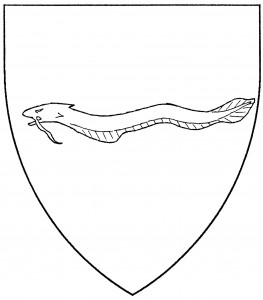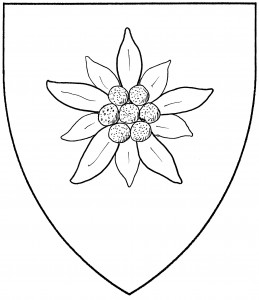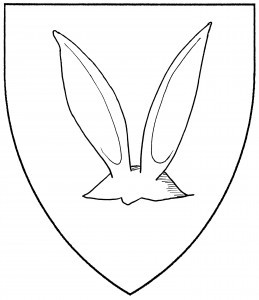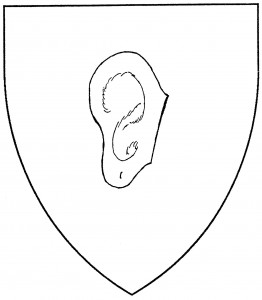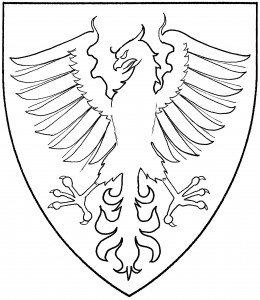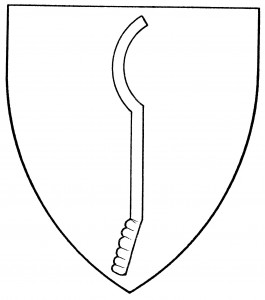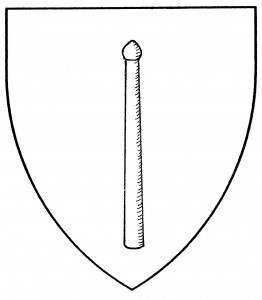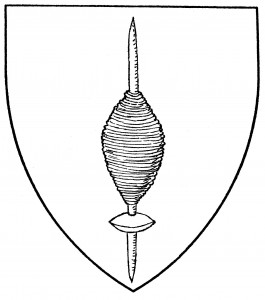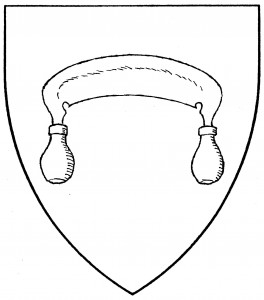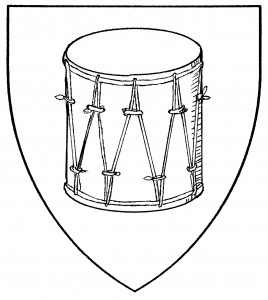
Drum (Period)
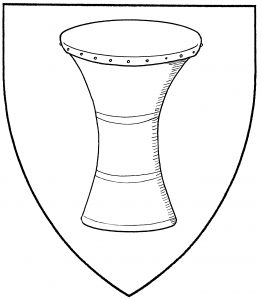
Dumbeg (Accepted)
A drum is a
musical instrument of the percussion family; it usually consists of a hollow wooden cylinder with at least one end covered by a stretched membrane. It’s a period charge, found in the canting arms (French
tambour) of Jehan Tabourot, d.1595. (Tabourot is better known under his pseudonym of Thoinot Arbeau; he blazons his arms in the dedication of his
Orchésographie. See also Woodward 383.) The illustration is taken from the example in Guillim, 1610 [224]. The default drum, used in war and processionals, was a “side drum”, or in modern terms, a tenor drum; it’s palewise by default, with the drumhead to chief.
Society armory gives examples of the “dumbeg” (“dumbek”, “doumbec”), a goblet-shaped drum found in Muslim lands, often used as accompaniment for dancers. The dumbeg itself does not appear to be a period instrument, but it belongs to a class of Muslim goblet drums collectively known as darabukka, which are period: an example is found in the Cantigas de Santa Maria of Alfonso the Wise, late-13th Century (from which the illustration is taken). Society blazons continue to use the term “dumbeg” for continuity’s sake.

Tambour (Accepted); timbrel (Accepted)
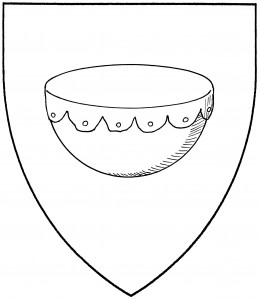
Kettle drum (Accepted)
Also found in Society armory is the “kettle drum” or “naker drum”, with a closed hemispherical body, as found in the Luttrell Psalter, c.1340. We have the “tabor”, like the side drum but not as tall, worn on the hip and played together with a flute; examples of pipe-and-tabor players date back to c.1270 [Montagu 47]. The “tambour” is a wide shallow drum; when cymbals are mounted around the frame, it becomes a “tambourine” or “timbrel”, as seen on a relief by Agostino di Duccio, c.1454 [Remnant 165].
Drums, when blazoned “wooden [type of drum] proper”, have brown cylinders or frames, and argent drumheads, by Society convention; sometimes the drumhead is explicitly tinctured.
Geoffrey de Barde bears: Sable, a drum argent.
Naila Kalilah bears: Purpure, a serpent glissant bendwise Or between a dumbeg and a pair of zils argent.
Anna Kalita bears: Purpure, two kettle drums in fess Or, in chief two drumsticks in saltire argent.
Sean Tabor bears: Gules, a sword inverted argent piercing a tabor Or, a bordure per pale argent and Or.
Roger the Goliard bears as a badge: Azure, on a demi-sun issuant from base Or in fess a mandolin bendwise sinister, a recorder bendwise, and a wood-framed tambourine all proper, in chief three doves volant argent.
